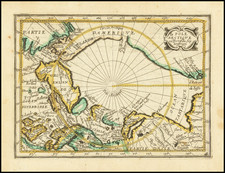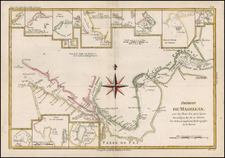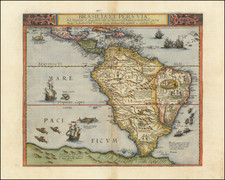Rare English map of the Straits of Magellan and contiguous regions, which accompanied the report of John Narbrough.
Fine example of this scarce map, originally published in 1694 to accompany the printed version of Narbrough's journal. A second edition was printed in 1713, with the dedication to Samuel Pepys removed and replaced with a dedication to Robert Harley, Earl of Oxford and Mortimer. The map provides one of the most detailed treatments of the region and certainly the most detailed map of the region printed in England in the 17th Century.
Sir John Narborough was an English navigator, born in Norfolk in 1637. Narborough entered the navy as a midshipman, served during the war with the Dutch in 1664, and was given in 1669 the command of an expedition to the South sea. He exploreded the coast of Patagonia and crossed through the Straights of Magellan in the fall of 1670. He then sailed along the Chilian coast as far as Valdivia, but, being denied entrance to that harbor by the Spanish authorities, he returned to England.
In 1671, Narborough served under the Duke of York at the battle of Solebay. He was made rear-admiral and knighted in 1673, commanded also the expeditions against Tripoli in 1674 and Algiers in 1677, and was appointed in 1680 commissioner of the admiralty, which post he held till his death in 1688. The narrative of his expedition to the South sea, written in collaboration with his lieutenant, Pecker, was published in the series "An Account of Several Late Voyages and Discoveries to the South and North" (London, 1694). It was translated into French (Amsterdam, 1722), into German (Vienna, 1725), and into Dutch and Italian. Narborough's narrative gives the exact geographical position of the principal points on the Patagonian coasts and the Strait of Magellan, and was extensively used for nearly a century by navigators to the South sea. He gave his name to an island south of Chiloe.









![[Glaciers & Polar Ice Packs, etc.] Arctic Ocean Greenland](https://storage.googleapis.com/raremaps/img/small/79033.jpg)
![[Signed Political Satire Artwork] Vietnam ... Vietnam ... Vietnam ...](https://storage.googleapis.com/raremaps/img/small/68726.jpg)



